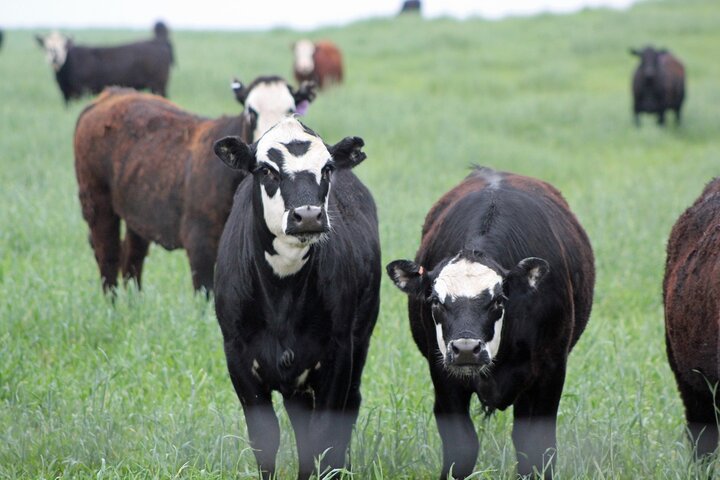It is no secret that rainfall and humidity aid in the quality and quantity of summer forage production. However, these two factors also contribute to the fly populations. Not only do large fly populations cause irritation that creates devastating production losses, but also spreads infectious bovine keratoconjunctivitis (IBK) or pinkeye. Pinkeye is a highly contagious disease that promotes inflammation of the cornea and conjunctiva portions of the eye. The occurrence of pinkeye increases in the spring and peaks in the summer months before decreasing in the fall. The severity of pinkeye ranges from mild to severe, can cause blindness if left untreated, and will likely cause significant reductions in performance of cattle.
There is a higher incidence of pinkeye in calves as opposed to adult cattle, who have greater levels of protective antibodies on the surface of the eye. Calves who have been plagued with pinkeye will weigh as much as 60 pounds lighter on sale day, and white scars on their eyes causes less aggressive bidding from cattle buyers. Once pinkeye begins to spread in a herd, it can be difficult to contain. Therefore, it is highly encouraged for producers to mitigate risk factors. Face flies are attracted to the excessive tearing of the eye caused by the irritation. They then pick up the causative bacteria of pinkeye and begin transferring it to other animals, with the ability to infect several animals in the same day. Importantly, producers need to address symptoms (tearing, squinting, and blinking) immediately before exponential growth causes significant production losses.
In most scenarios, the best way to prevent an outbreak is to control the flies. Fly control comes in many forms and can include pour-ons, fly tags, sprays, or dust-bags. Fly tags work best when administered at the proper time. Unfortunately, this optimal time usually falls after vaccinating and de-horning. If administered then, the efficacy of the fly tag will be compromised due to these dates usually taking place 60 days prior to fly season. Many pinkeye vaccines require a booster closer to fly season. This could potentially be a good time to administer fly tags.
Other ways to reduce pinkeye:
- Reduce as many risk factors as possible that cause damage to the corneal surface. This could be done by clipping mature seedheads to reduce levels of dust or foreign objects that can irritate the eyes.
- Ultraviolet sunlight increases the chances of disease development. Be sure to provide plenty of shade. Breeds that lack pigment on their eyelids, such as Herefords and Charolais are more susceptible to pinkeye because of increased sensitivity to sunlight.
- Proper vaccination protocols such as timing of vaccination and which vaccine to use in your area should be discussed well in advance with your veterinarian.
- As always be sure to follow sound nutrition protocols to maintain optimal health. If trace mineral levels such as selenium and copper are very low, or vitamin A for cattle on low quality forages, the animal’s immune system will be compromised, exacerbating the effects of pinkeye.
For more information on Nebraska Beef Extension or pinkeye, reach me at (402) 624-8007 or follow my twitter page @BigRedBeefTalk.
Interviews with the authors of BeefWatch newsletter articles become available throughout the month of publication and are accessible at https://go.unl.edu/podcast.

